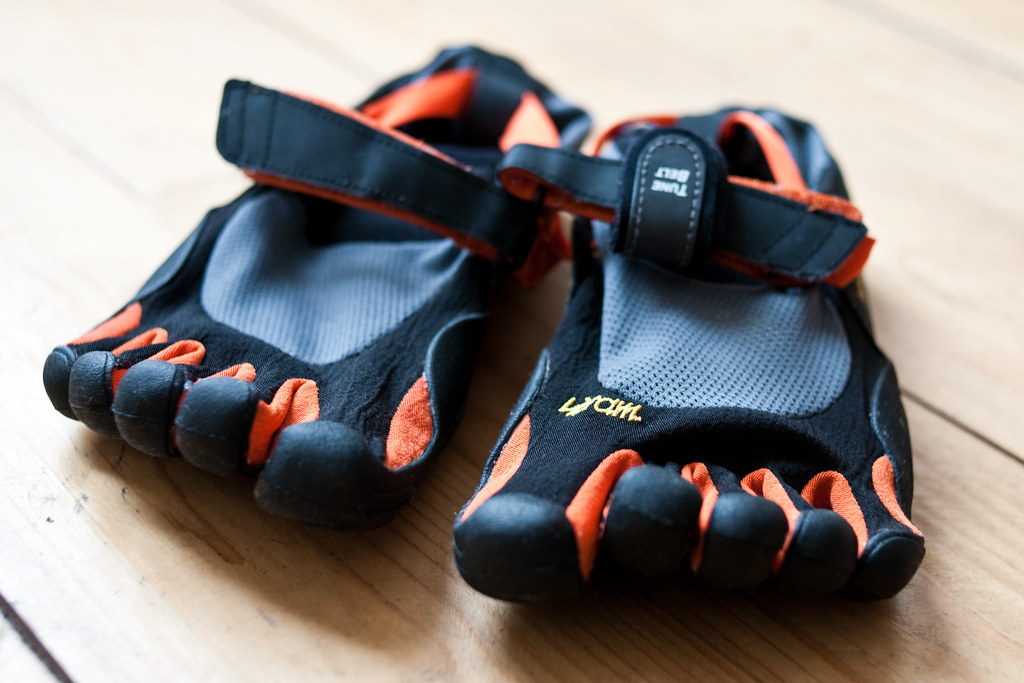Minimalist shoes have been debated in the running world for several years.
Some runners swear by them, while others remain skeptical of their benefits. The question remains:
Do minimalist shoes work?
Studies have shown minimalist shoes may improve foot and leg strength, balance, and stability. However, these benefits are not universal and depend on individual factors such as:
- foot shape
- running surface
- running style

With a thin sole and minimal support, minimalist footwear mimic the feeling of running barefoot. Bearfoot shoe advocates believe they can improve running form, strengthen foot and leg muscles, and reduce the risk of injury. However, critics argue that the lack of support can lead to injuries and that the benefits of barefoot shoes are overstated.
According to a study published in the Journal of Strength and Conditioning Research, runners who transitioned to minimalist shoes experienced increased calf and foot muscle size, suggesting that they may have some benefits. However, the study also found that the transition should be gradual to avoid injury.
To find out more about barefoot shoes, check out this article: What Are Barefoot Shoes? (4 Key Differences With Traditional Shoes
Benefits of Minimalist Shoes
Improved Foot and Leg Strength
One of the main benefits of minimalist shoes (also referred to as ‘barefoot’ or simply ‘BF’ shoes) is that they can help improve foot and leg strength.
According to a study published in the Journal of Strength and Conditioning Research, walking in BF footwear can increase muscle activation in the feet and lower legs compared to walking in traditional shoes, which is likely due to the decreased cushion and support in barefoot shoes, requiring the muscles to work harder to support the foot.
Wearing BF shoes can also help strengthen the arches of the feet, improving overall foot function. This can particularly benefit those with flat feet or other foot conditions such as bunions and bad circulation.
Better Balance and Stability
Another benefit of BF foot wear is that they can help improve balance and stability.
Thick soles and elevated heels can throw off the body’s natural alignment and make it HARDER to maintain balance when wearing traditional shoes. BF shoes, on the other hand, have a low profile and minimal cushioning, which can help the body maintain a natural posture and improve balance.
A study published in the Journal of Sports Science and Medicine states that wearing minimalist shoes can improve balance and stability in older adults, preventing falls and reducing the risk of injury.
Reduced Risk of Injury
One of the most touted benefits of minimalist shoes is that they can reduce the risk of injury. They encourage a more natural gait and foot strike, which can help reduce the impact on the joints and muscles.
According to a review published in the British Journal of Sports Medicine, minimalist shoes may help reduce the risk of running-related injuries, such as plantar fasciitis and shin splints. However, it’s important to note that minimalist shoes are not a magic bullet for injury prevention and should be used with proper training and form.
It’s also important to note that minimalist shoes are not for everyone. Those with pre-existing foot conditions or injuries may not benefit from minimalist shoes and should consult a healthcare professional before making the switch.
To learn how to transition to minimalist shoes safely check out this guide.
While minimalist shoes may not be for everyone, they can benefit those who can wear them comfortably and safely.
Summary:
Minimalist shoes can be a valuable addition to a healthy and active lifestyle by improving:
- foot and leg strength
- balance and stability,
- reducing the risk of injury,
Do Minimalist Shoes Work for Everyone?
Factors to Consider
Minimalist shoes mimic barefoot running by providing less cushioning and support. While they may benefit some, they may not be suitable for others. Factors to consider when deciding if minimalist shoes work for you include:
- Foot Shape and Arch: People with high arches or flat feet may not find minimalist shoes comfortable or supportive enough.
- Running Surface: Minimalist shoes are best suited for running on soft surfaces like grass or dirt, as they provide less protection from impact than traditional running shoes.
- Running Style: Minimalist shoes are designed for forefoot or midfoot striking, which differs from heel striking in conventional running shoes. People used to heel striking may need to adjust their running style to avoid injury.
Individual Differences
While minimalist shoes may work well for some runners, they may not be suitable for others due to individual differences in anatomy, biomechanics, and injury history.
According to Dr. John Pagliano, a podiatrist and author of ‘The Runner’s Foot and Ankle Handbook’;
“Minimalist shoes are not for everyone. There is no one-size-fits-all approach to running shoes.”
It is essential to consult a healthcare professional or running coach before switching to BF shoes, especially if you have a history of foot or ankle injuries.
Ultimately, the decision to use minimalist shoes should be based on individual factors, including foot shape, running surface, running style, and personal preferences and goals.
What Do Podiatrists Say About Zero Drop Shoes?
Podiatrists have mixed opinions about zero-drop shoes. Some believe these shoes can benefit individuals with a neutral foot type who do not suffer from foot or ankle problems. However, others caution that zero-drop shoes can cause problems for individuals with flat feet, high arches, or other foot conditions.
According to Dr. Miguel Cunha, a podiatrist and founder of Gotham Footcare, “Zero-drop running shoes are minimal ‘barefoot’ running shoes that have minimal to no cushioning and leave the feet laying directly flat on a level surface of the shoe.”
He notes that these shoes can be beneficial for individuals who have a neutral foot type, as they can help to strengthen the muscles in the feet and lower legs.
However, Dr. Cunha also warns that zero-drop shoes can be problematic for individuals who have flat feet, as they can exacerbate the condition and cause pain. He recommends that individuals with flat feet choose shoes with arch support and cushioning.
Similarly, Dr. Howard Osterman, a podiatrist and team physician for the Washington Wizards basketball team, cautions that zero-drop shoes can cause problems for individuals with high arches. He notes that these individuals require shoes with more cushioning and support to help absorb shock and prevent injuries.
Individuals need to consult with a podiatrist before switching to zero-drop shoes. A podiatrist can evaluate the individual’s foot type and recommend shoes that provide support and cushioning to prevent injury and promote proper foot health.
Conclusion
In a nutshell, minimalist shoes DO work for some people but there is no global ‘yes or no’ answer. It is essential to note that they may not be suitable for everyone. Individuals with pre-existing foot conditions or injuries should consult a healthcare professional before switching. It is also important to gradually transition to BF shoes to avoid damage.
Ultimately, the decision to wear minimalist shoes is a personal one that should be based on individual needs and preferences, and should be run by a professional.
While the debate over minimalist shoes continues, it is clear that they offer a unique alternative to traditional running shoes. By reducing weight and support, minimalist shoes may help runners improve their form and strengthen their muscles.
FAQs
Q: Are minimalist shoes good for running long distances? A: It depends on the individual's foot shape, running style, and preferences. Some runners find that minimalist shoes are comfortable for long-distance running, while others prefer more cushioned shoes.
Q: Can minimalist shoes help with plantar fasciitis? A: Minimalist shoes may help reduce the risk of plantar fasciitis by promoting a more natural gait and foot strike. However, those with pre-existing plantar fasciitis should consult a healthcare professional before switching to minimalist shoes.
Q: Can I wear minimalist shoes for everyday use? A: Yes, minimalist shoes can be worn for everyday use. However, it's important to choose a pair that fits well and provides enough support for your individual needs.
Q: How long does it take to transition to minimalist shoes? A: The length of time it takes to transition to minimalist shoes varies depending on individual factors such as foot shape and running style, however a rough guide is 2-3 months for light use. It's important to transition gradually to avoid injury.


